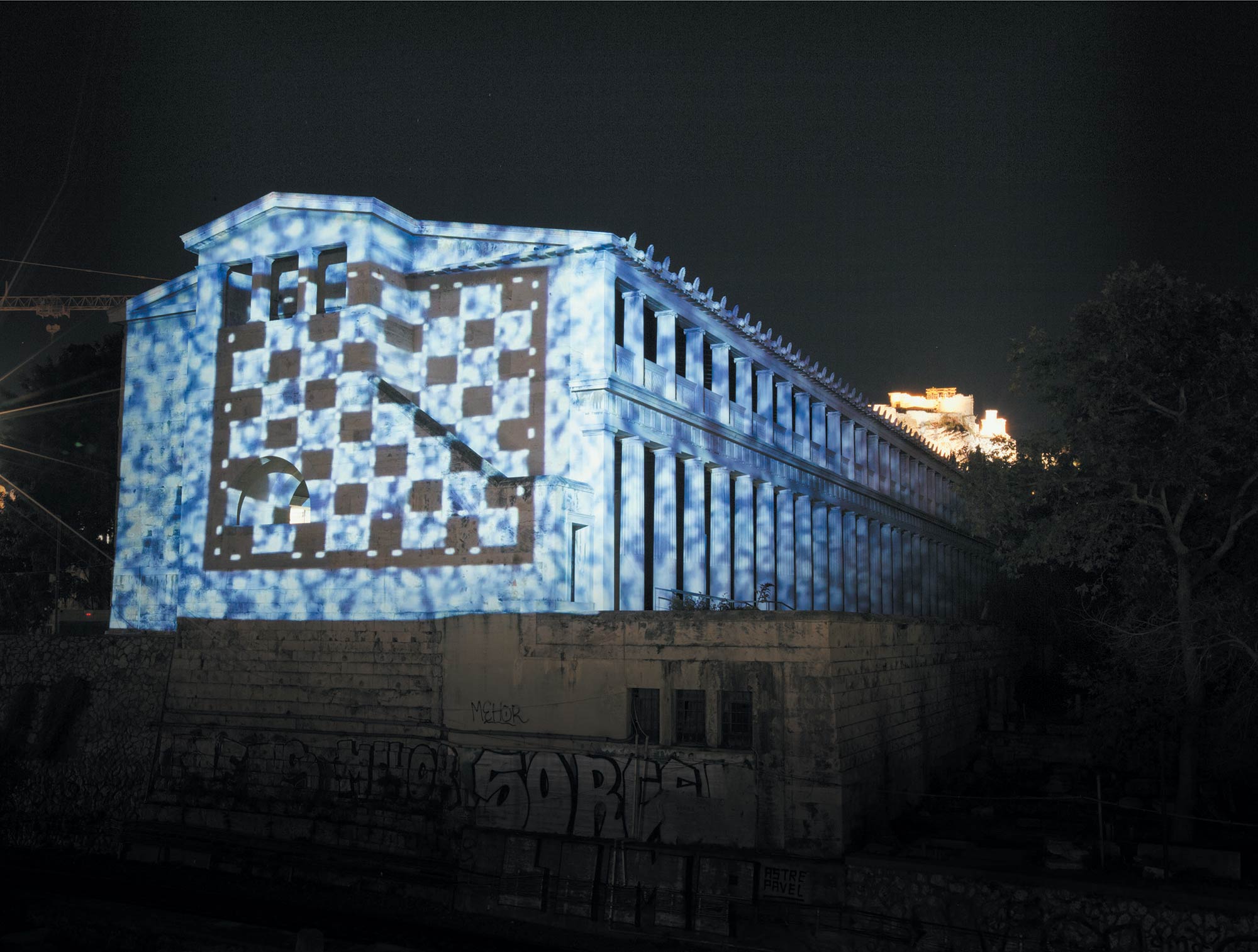In the Ancient Agora, a triptych is created, with Chess Continuum (1992) as its main tool: an ideogram that renders the chessboard with a single closed-loop line, and the opposites – black and white – as complementary.
It echoes electrical circuits but also patterns of sunlight refracted on the sea’s surface, where luminous ‘threads’ intertwine, weaving random lattices of light. The fundamental premise is that networks – as parallel natural and electronic realms – constantly transform us. All is intrinsically interconnected, energetic, pulsating.
Within the archaeological site, visitors walking on a platform made of earth and marble – both a chessboard and a labyrinth of threads – are called to take decisions; and it is relationships among the visitors that ‘weave’ the work. In this locus where the concept of Democracy was born, individuality and collectivity are examined, embodied in experiential performances.
In the video projection on the Stoa of Attalos, visible beneath the rock of the Acropolis, we confront civilisation as a human edifice. Concurrently, we examine the homology of order and chaos as it manifests in the resemblance of the glistening sea to chaotic noise (television static). Furthermore, the colonnade of the Stoa reveals itself as a system of voidfull and light-shadow interchanges; evoking the binary code of computers – the 0s and 1s that indicate the cessation or passage of electrical current. Thus, the colonnade gets transformed into barcode, which is the method through which data is read and retrieved by the Machine.
In the Fields of Time Humanity is at Play, redefining consciousness and integrity, anew.
Aemilia Papaphilippou

